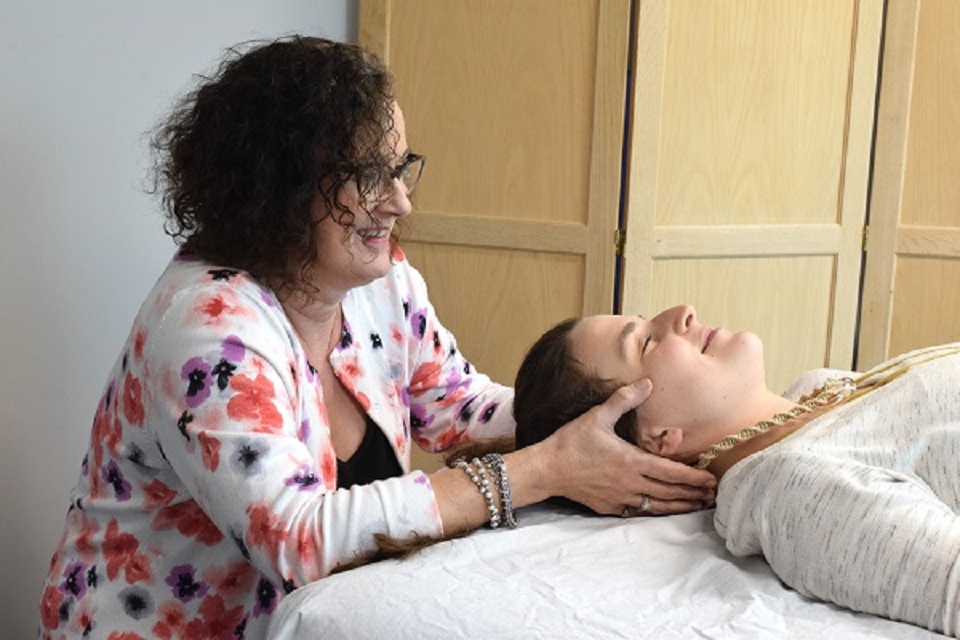CranioSacral Therapy (CST) is a manual therapy approach that uses very light touch to facilitate optimal brain function. CST can benefit a variety of diagnoses and conditions.
Autism Spectrum
- Reduces sensory defensiveness and promotes engagement
- Helps to detoxify the nervous system
- Helps to reduce inflammation within the nervous system
- Promotes a calm, alert state
- Can be used to directly reduce gastro intestinal issues often seen in ASD
- Promotes optimal sleep patterns
- Supports and enhances all other interventions and treatment strategies being used
PANS/PANDAS
- Reduces anxiety, OCD and other psychological symptoms associated with PANS/PANDAS
- Reduces tissue restrictions that often occur after experiencing choking or gagging incidents
- Promotes the body’s ability to “let go” of emotion associated with choking or gagging
- Helps to “set the child up” for success with more formalized feeding interventions
- Reduces inflammation in the brain
- Promotes optimal sleep patterns
ADHD
- Promotes a calm/alert state needed for optimal focus and attention
- Reduces sensory defensiveness, which is often present for people with ADD/ADHD
- Reduces inflammation in the brain
- Supports other therapeutic interventions by promoting an optimal environment in the brain
Anxiety/Depression
- Promotes a calm, alert state
- Increases awareness of deep breathing, essential for breaking the cycle of shallow breathing associated with anxiety/panic attacks
- Reducing tissue restrictions to promote the release of emotional trauma(s) held in the body that interfere with healing
- Improves sleep patterns that are often disrupted for people with anxiety/depression
Concussions
- Aids the healing process by reducing inflammation and removing toxins, broken up cells, etc. post injury
- Quickly reduces symptoms associated with concussions – headaches, sensory sensitivity, confusion, and mood shifts
- Prevents formation of scar tissue in the membranes within the skull post injury
- Supports the body’s ability to “let go” of emotional trauma associated with the injury
Migraines
- Reduces frequency, intensity and duration of migraines/headaches
- Often helps people to reduce and/or eliminate medications used to treat migraines
- Reduces muscle tension that contributes to migraines associated with stress
- Helps the body “flush” toxins associated with inflammation
- Promotes the body’s ability to “let go” of emotional trauma that may be an underlying cause of the migraines
Acute and Chronic Back and Neck Pain
- Facilitates release of soft tissue restrictions that contribute to the pain
- Enhances effects of chiropractic adjustments by loosening soft tissues to allow the adjustment to occur more fully and last longer
- Enhances effectiveness of exercise programs designed to strengthen core musculature
- Helps the body “flush” toxins associated with inflammation
- Promotes the body’s ability to “let go” of emotional contributors to the pain
- Reduces anxiety and stress associated with chronic pain
Torticollis/Plagiocephaly
- Reduces tissue restrictions contributing to the condition
- Facilitates the body’s ability to “reshape” the skull
- Supports reshaping the skull when helmets are in use
- Supports the infant’s ability to move restricted muscles/soft tissue to allow for strengthening of affected muscles
- Enhances effect of other therapeutic interventions (physical therapy, chiropractic, etc.)
Feeding Challenges
- Loosens tissue restrictions that interfere with motor control needed for feeding (i.e.: tongue tie)
- Helps to promote a calm, alert state needed for optimal success with eating
- Reduces oral defensiveness associated with feeding challenges
- Supports all other treatment strategies being used


